In this blog post, we’ll delve into the world of chess openings from the perspective of Black, uncovering the best opening moves that can help you gain an advantage, defend effectively, and, ultimately, outmaneuver your opponent. This lesson is specifically geared toward the novice player looking to enhance their chess skills, with tools and knowledge needed to command the board and seize victory from the clutches of an adversary. Chess is often compared to a battlefield, where two armies face off with strategic precision, and the first few moves can set the stage for the entire game. Let’s explore the strategic beauty of chess openings for Black and sharpen your skills for the battles ahead.
This post contains affiliate links. Please read our disclosure.
While much attention is given to White’s opening moves, Black’s choices are equally critical. As a Black player, you don’t just respond to your opponent’s moves; you have the power to dictate the tempo and flow of the game from the very start.
Worst and Unconventional Chess Opening Moves for Black
Before we dive into the world of the best opening moves for Black in chess, it’s essential to understand the pitfalls and blunders that can set you on the path to defeat. Just as a seasoned chess player anticipates their opponent’s strategy, they must also recognize and avoid common mistakes that can lead to a compromised position.
In this section, we will discuss some of the worst opening moves for Black, and we’ll illustrate why each specific move is considered a bad choice. Examining these mistakes, you’ll be better equipped to steer clear of them in your own games and gain a deeper understanding of the underlying chess principles. Then we’ll go on to cover the best responses to White’s opening moves, especially A4 and A5.
1. h5 (Hippopotamus Defense):
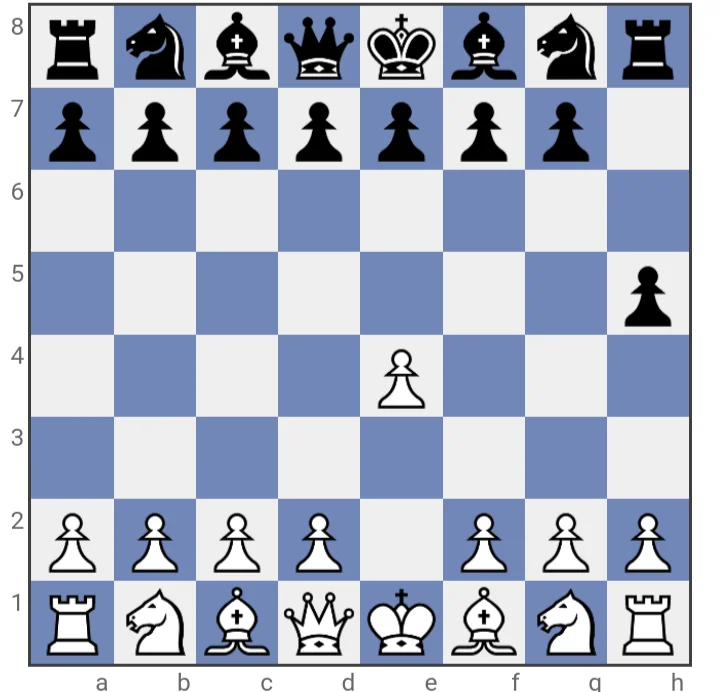
Why it’s a bad move: The Hippopotamus Defense, characterized by Pawn moves to h5 and g6, may appear as an unconventional and solid setup, but it’s slow and doesn’t contest the center. White can exploit the weaknesses created by this move order and establish a strong presence in the center, ultimately gaining a significant advantage.
2. a6 (Stonewall Defense):
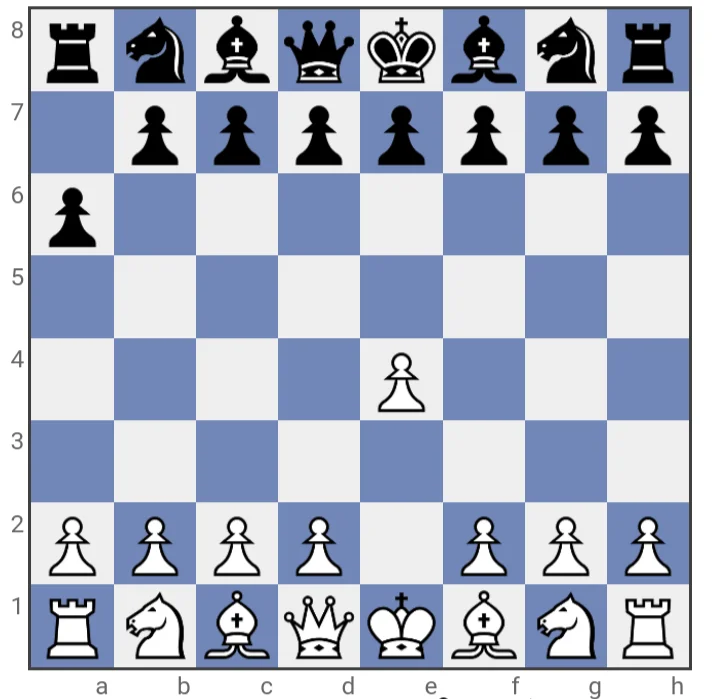
Why it’s a bad move: The Stonewall Defense with a6 and may seem solid but lacks flexibility and cedes the center to White. This can lead to a cramped position for Black and limited piece mobility, making it easier for White to mount an aggressive attack.
3. f5 (Latvian Gambit):
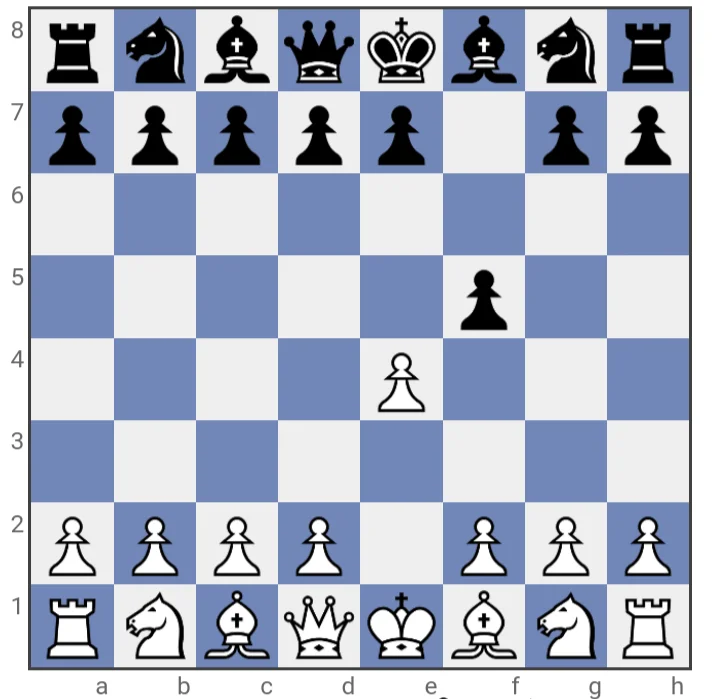
Why it’s a bad move: The Latvian Gambit with f5 is a highly risky choice. While it can catch your opponent off guard, it’s a speculative and double-edged opening. White can quickly develop their pieces and take advantage of Black’s Pawn weaknesses, making it a challenging option for Black to defend.
4. g5 (Grob’s Attack):
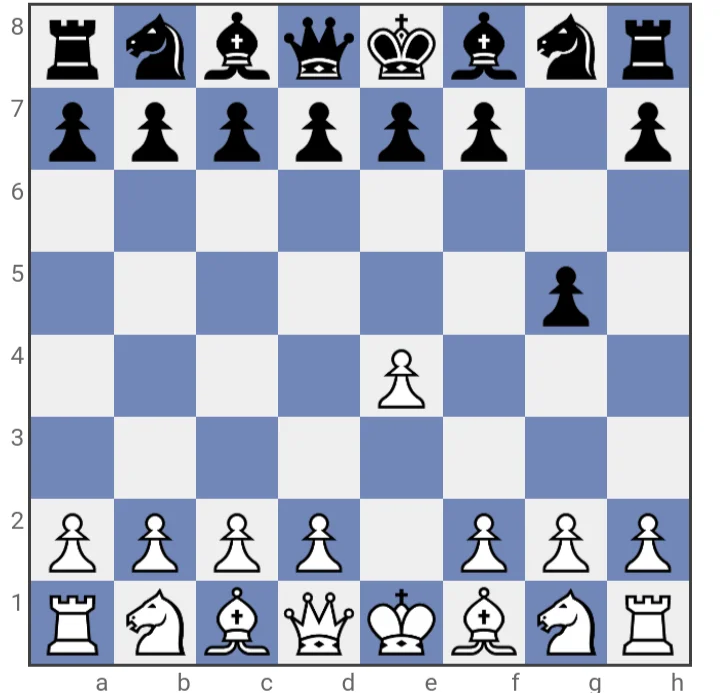
Why it’s a bad move: The Grob’s Attack, characterized by Pawn moves to g5, is often considered an unsound opening, as it neglects central control and piece development. White can easily gain a strong position in the center and launch an effective counter-attack.
5. a5 (Englund Gambit):
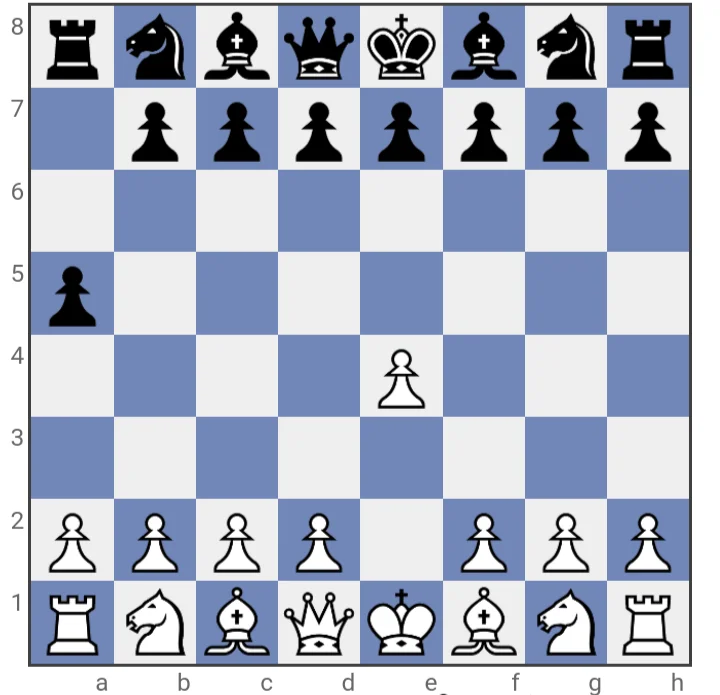
Why it’s a bad move: The Englund Gambit, initiated by a5, is an extremely uncommon and risky choice. While it aims to disrupt White’s Pawn structure, it often leads to an unbalanced position with unclear prospects for Black. Skilled opponents can capitalize on the weaknesses created by this gambit.
6. h5 (Desperado Pawn Push):

Why it’s a bad move: Pushing the h-Pawn early in the game is considered unorthodox and not a recommended strategy for Black. This move leaves the king more exposed and doesn’t contribute to the central control or piece development, which are fundamental principles in chess.
These moves are less common and often considered suboptimal in the context of traditional chess openings. It’s crucial for players to understand the underlying principles and reasons behind these moves to make informed decisions during their games.
Now that we’ve explored the worst opening moves for Black, let’s take a look at some of the most common and effective opening moves that Black can employ in a game of chess. Each of these openings has its unique characteristics and strategic aims:
1. e5 (Double King’s Pawn Opening):
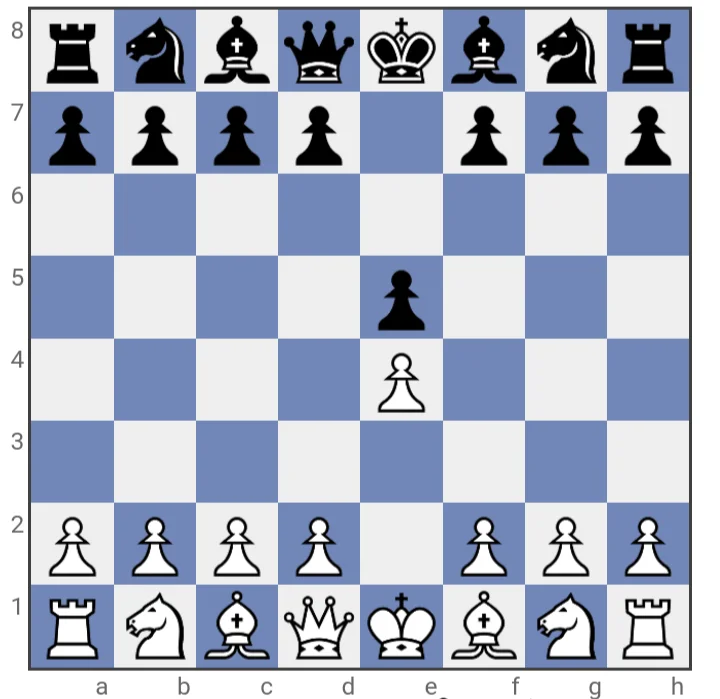
The double king’s Pawn opening mirrors White’s e4 and aims to control the center while allowing for quick development of Black’s pieces. It can lead to classic openings like the Ruy López and the Italian Game.
2. c5 (Sicilian Defense):
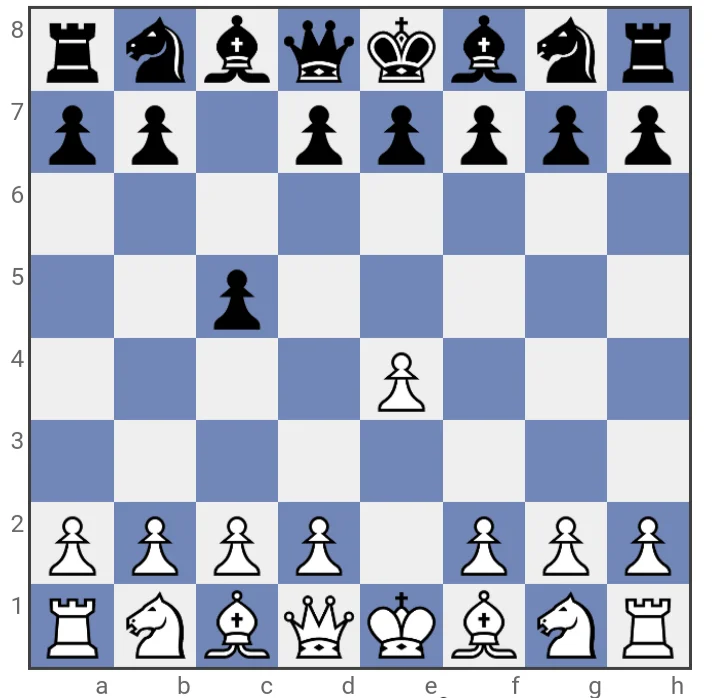
The Sicilian Defense is a popular choice for Black, aiming to create an asymmetrical position. Black’s Pawn on c5 challenges White’s center and often leads to complex, tactical games.
3. e6 (French Defense):
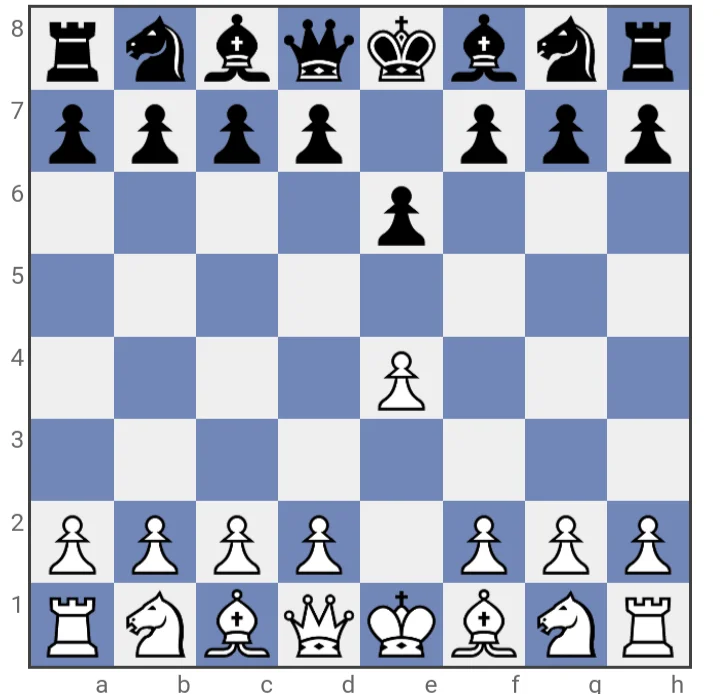
The French Defense involves advancing the e6 Pawn to create a solid Pawn structure but potentially limited piece mobility. It leads to strategic battles with central tension.
4. c6 (Caro-Kann Defense):
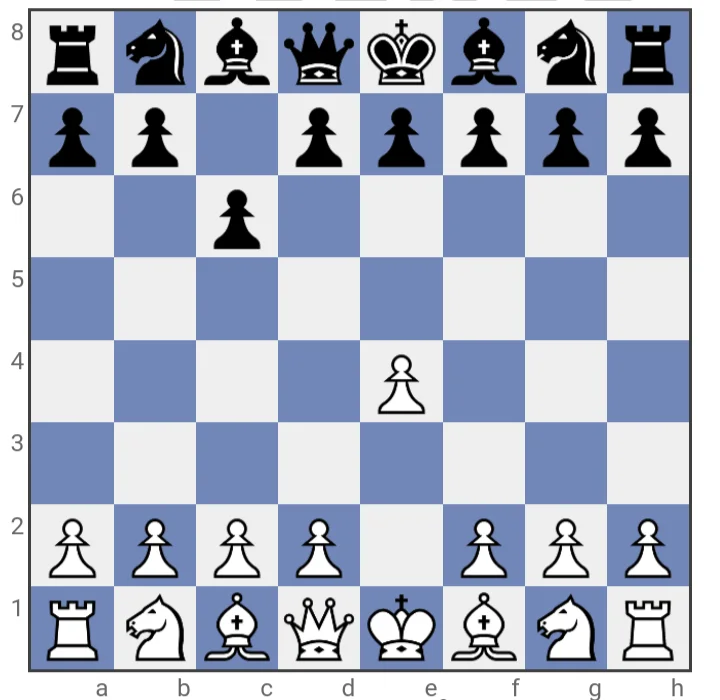
The Caro-Kann Defense involves advancing the c6 pawn, creating a robust Pawn chain with d7. This opening emphasizes a solid and closed position.
5. d6 (Pirc Defense):
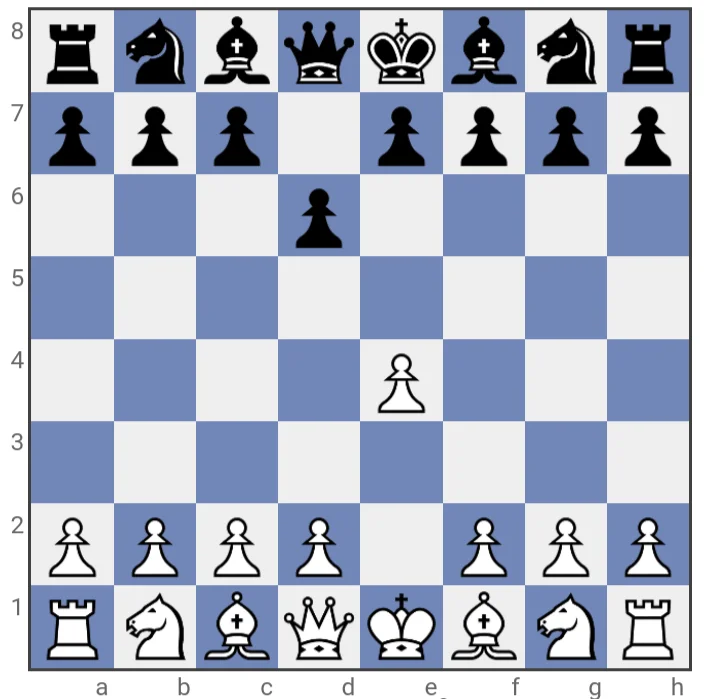
The Pirc Defense is a hypermodern opening where Black’s Pawn on d6 supports central control without committing pawns to the center. It often leads to a flexible and dynamic game.
6. g6 (Robatsch/Modern Defense):
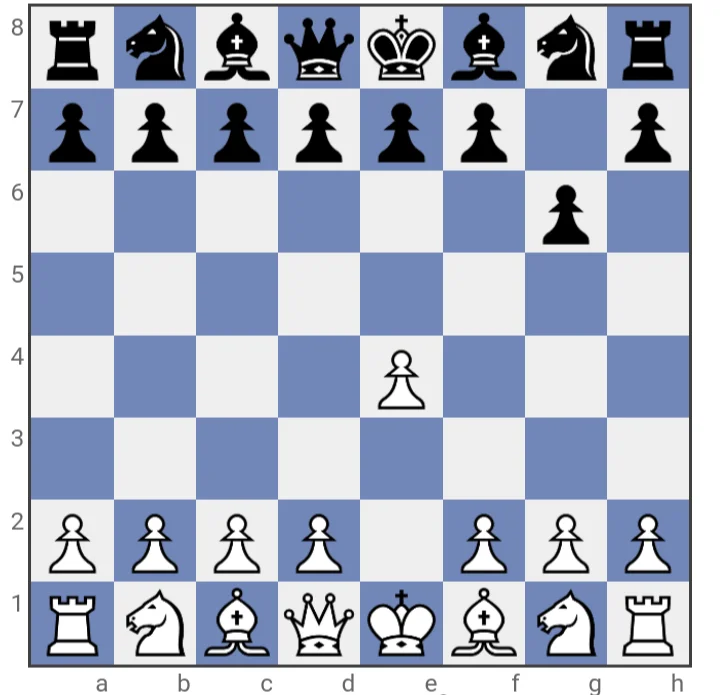
The Modern Defense involves fianchettoing the kingside bishop by playing g6. It’s a flexible choice that allows for piece development and often leads to a hypermodern, Pawn structure-free game.
7. Nc6 (Nimzowitsch Defense):
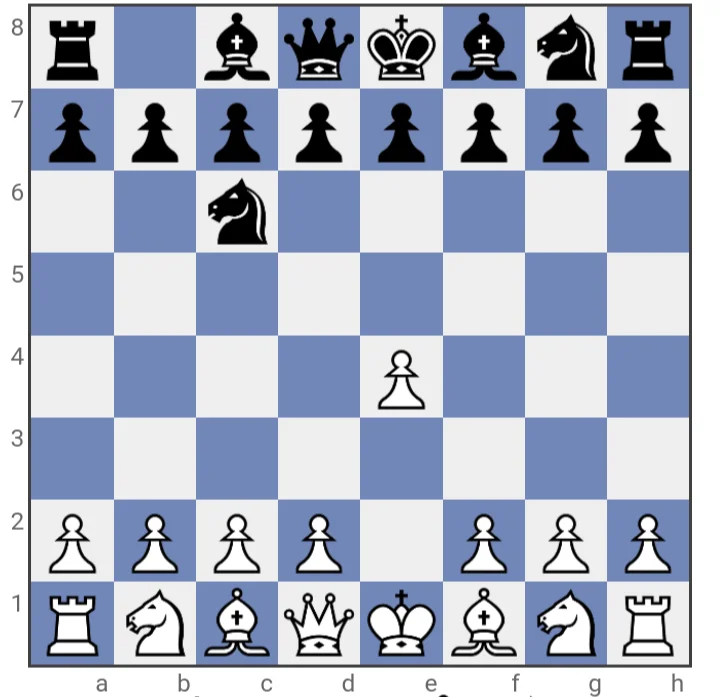
The Nimzowitsch Defense focuses on knight development and often leads to Pawn moves like e6 and d6. It aims to control the center and allows Black to choose the nature of the game.
Conclusion
These common opening moves for Black provide a variety of options, each with its unique characteristics and strategic aims. Depending on your playing style and preferences, you can choose the opening that best suits your game.

